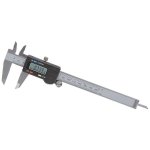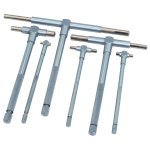Re-visiting my thread from 2 years ago . . . Obviously, I did not proceed with the re-build and the engines have been running fine the past 2 seasons (2019 & 2020). I have 1,030 hours on the engines, so only doing about 25 hours per season, which is down a bit from years past.
Anyway, I am thinking that this time next year (Fall 2021) I will pull the engines and do a rebuild. Still saving up $$$ for my next boat and that may take a couple more years, so I wouldn't be selling the boat until late 2022 or 2023.
The engines are the Gen 6 version of the 454 - oval port. Is the Gen 6 the Same as the L29??? Not sure about the Vortec stuff either??? I think these engines just pre-date the L29/Vortec by a year or 2 . . .
Since I got 2 engines, and will eventually be selling the boat, I'm planning out a 'low(er) budget' rebuild in that I plan on doing most of the dis-assembly/re-assembly work myself. I am thinking about the following:
1) Send the engine locks and crankshafts out for machining. Hopefully, the bores can be done at 0.030" over and the crank can be 0.010" under. Mill the deck as needed. Install new camshaft bearings.
2) Send heads and valves out for grinding and milling (as needed). Not sure about the valve guides. (I believe that casting numbers on the heads are 10114156), which seem to be fairly rare

3) Inspect the camshaft (before sending things to the machine shop) determine if I should get a new cam or have it machined.
4) After machining buy a 454 rebuild kit with the proper oversize pistons and under size bearings.
5) Assemble the engines, test run, install, etc. etc.
I'm thinking/hoping that I can come in around $2k per engine or $4-5K total. I've seen some threads on OSO and elsewhere regarding a complete rebuild of a 454 and it those were running around $6K/engine

. I'm hoping I can come in around $4K, which would make it worthwhile . . . if it were much more, it may not be worth it.
I assume that I should buy new lifters, so wondering if I should just get a cam 'kit' i.e. camshaft and lifters

.
My guestimates for the cost of this are:
Engine block machining: $500 per engine
Crankshaft machining: $250 per engine
Head Machining: $250 per engine
Rebuilding 'kit': $750 per engine
Camshaft: $275 each
Miscellaneous stuff: $250 per engine
This would be about $2,275 per engine . . . $4,550 total.
Any thoughts on my plan and estimates?

Since boating season is over in the northeast (USA) I have time to think about these things . . .

Something like this. . .






















